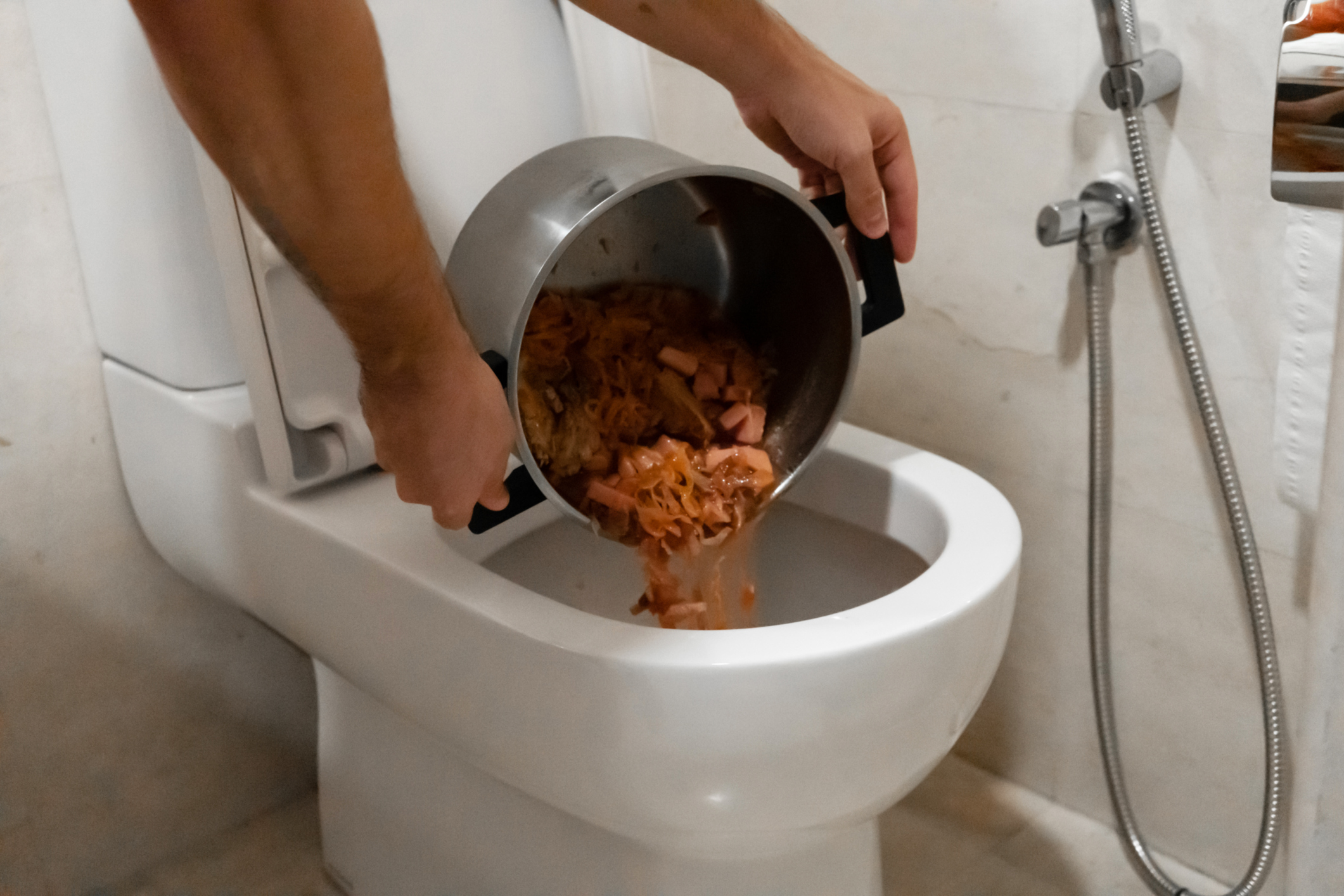Is it Allowed to Flush Food Down the Toilet?
Is it Allowed to Flush Food Down the Toilet?
Blog Article
They are making a few great annotation related to What Can Happen If You Flush Food Down the Toilet? in general in the content down the page.

Intro
Many people are frequently confronted with the problem of what to do with food waste, especially when it pertains to leftovers or scraps. One typical question that occurs is whether it's alright to purge food down the bathroom. In this short article, we'll look into the reasons that individuals could think about flushing food, the effects of doing so, and alternative techniques for appropriate disposal.
Reasons why people could consider flushing food
Lack of understanding
Some individuals may not recognize the possible injury triggered by flushing food down the commode. They might erroneously think that it's a harmless technique.
Convenience
Purging food down the bathroom might feel like a quick and easy solution to throwing away undesirable scraps, particularly when there's no close-by trash bin available.
Idleness
In some cases, individuals may just pick to flush food out of large idleness, without considering the consequences of their actions.
Repercussions of flushing food down the commode
Environmental impact
Food waste that ends up in waterways can add to air pollution and injury marine ecological communities. Additionally, the water made use of to purge food can strain water sources.
Plumbing problems
Flushing food can lead to clogged pipes and drains, causing costly pipes fixings and inconveniences.
Sorts of food that ought to not be flushed
Fibrous foods
Foods with fibrous structures such as celery or corn husks can obtain tangled in pipelines and create clogs.
Starchy foods
Starchy foods like pasta and rice can take in water and swell, resulting in clogs in pipes.
Oils and fats
Greasy foods like bacon or food preparation oils ought to never ever be purged down the toilet as they can strengthen and create clogs.
Proper disposal techniques for food waste
Utilizing a garbage disposal
For homes furnished with waste disposal unit, food scraps can be ground up and purged with the pipes system. However, not all foods are suitable for disposal in this manner.
Recycling
Certain food packaging products can be reused, decreasing waste and minimizing ecological effect.
Composting
Composting is a green means to take care of food waste. Organic products can be composted and utilized to improve soil for gardening.
The importance of correct waste monitoring
Minimizing environmental injury
Proper waste management methods, such as composting and recycling, help minimize contamination and maintain natural resources for future generations.
Safeguarding pipes systems
By staying clear of the practice of flushing food down the toilet, house owners can avoid pricey pipes fixings and keep the stability of their pipes systems.
Conclusion
Finally, while it might be appealing to flush food down the bathroom for convenience, it is very important to understand the prospective consequences of this activity. By embracing correct waste administration practices and dealing with food waste sensibly, individuals can contribute to healthier pipes systems and a cleaner atmosphere for all.
FLUSH FOOD DOWN THE TOILET?
FLUSHING FOOD CAN CAUSE BLOCKED DRAINS IN YOUR HOME
All of the plumbing fixtures in your home are connected to the same sewer pipe outside of your home. This outdoor sewer pipe is responsible for transporting all the wastewater from your home to the Council sewer mains. Even small pieces of food that go down the kitchen sink can cause problems for your sewer. It should therefore be obvious that flushing larger bits of food, such as meat, risks a clog in either the toilet itself or the sewer pipes. Flushing greasy food is even more problematic because oil coagulates when it cools, coating the interior lining of your pipes.
THE TOILET IS NOT A BIN
Food isn’t the only thing that people shouldn’t be flushing down the toilet. People use the toilet to dispose of all kinds of things such as tampons, makeup wipes, dental floss, kitty litter and even underwear. Water goes to great lengths to educate residents about the high costs and stress placed on wastewater treatment systems simply from people flushing the wrong stuff down the toilet. It costs taxpayers millions of dollars each year, and homeowners thousands in blocked drain repairs.
FLUSHING FOOD IS A WASTE OF WATER
Flushing food is a waste of our most precious resource - water. In June this year Level 1 water restrictions were introduced to protect water supply from drought conditions. Much of New South Wales continues to be affected by prolonged drought with recent figures revealing up to 97 per cent of the state remains in drought. Depending on whether you have a single or dual flush toilet, every single flush uses between five and 11 litres of water. In the current climate this is a huge amount of water to be wasting on flushing food that should be placed in the bin (or better yet, the compost).
https://www.jabplumbingsolutions.com.au/blog/can-you-flush-food-down-the-toilet

I was made aware of that article on What Can Happen If You Flush Food Down the Toilet? from a pal on another web property. Are you aware of somebody who is involved in the subject? Take a moment to promote it. Thanks for taking the time to read it.
Article Report this page